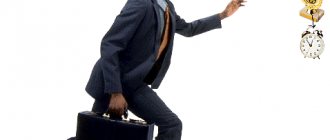Author: Nikiforidis
27 October 2022 08:04
Community: Psychology
Tags: Alan Pease Joe Navarro Paul Ekman Henrik Fexeus books nonverbal communication book selections psychology
32969
10
If you were missing a book that would help you understand body language, then here is a whole selection of good books. Each of them has its own twist: the subtleties of negotiations, communication with a partner, identifying lies. What interests you?
“Speak for sure!”, Alan Pease, Barbara Pease
0
See all photos in the gallery
Written by international experts in "communication technology," this book will teach you how to separate politeness from the grain of truth and decipher nonverbal cues. You will be able to appreciate your partner’s sincerity and correctly interpret his thoughts, and the ability to give compliments and listen carefully will allow you not only to achieve success in your personal life, but will also raise you to the top of your professional career and make you a “master of conversation.”
PREFACE
It is well known how difficult it is to learn a foreign language. How much effort and time do you need to spend? But there is one language on earth that is accessible and understandable to everyone - this is the language of facial expressions and gestures, which we use every moment of our lives. This language is also called a non-verbal method of communication (as opposed to verbal - verbal), or sign language.
From a scientific point of view, “a gesture is any sign produced by the head, hand, or body that expresses emotion or conveys information.” “Gesture language is a system of signs carried out by conventional gestures and used for linguistic communication along with or instead of auditory speech. It is used by peoples of primitive culture, as well as developed cultures in multilingual conditions, in connection with ancient everyday rituals, as well as for muteness.” “A gesture is an action that sends a visual signal to the observer.”
People control their bodies and know how to hide their feelings, some good, some bad, but everyone, without exception, supplements their speech with gestures. And not only when, due to muteness, age or illness, they cannot speak. Nonverbal language can sometimes express (or hide) even more information and in a more emotional way than speech. This is done both involuntarily - gestures of jubilation, despair, hopelessness, unexpected surprise and many others - and quite meaningfully, in order to emphasize this or that voiced thought or, on the contrary, so as not to betray one’s true feelings.
If we do not always speak, then we constantly make movements, without even noticing it. Here two lovers meet in public, they are silent or say ordinary phrases, but their looks and gestures do not even speak, but shout about love. Only this scream is not heard by others. The eyes sparkle, the cheeks turn pink, the smile stretches the lips, the hands tremble, the bodies reach out to each other - only a blind person would not understand this! Or you are discussing some problem with colleagues and suddenly realize that you don’t consider any of the points of view correct.
However, for various reasons, you do not dare to express your opinion and begin to automatically remove an invisible thread or fluff from your clothes, while looking not into the eyes of your colleagues, but somewhere on the floor. This is a gesture of disapproval, condemnation, which, without meaning to, you performed. If at that moment there was a person next to you who understood sign language, he would definitely “read” your silent answer.
Some professions require mastery of your body and body language. For example, the profession of an actor, dancer. Watching ballet dancers, one can only be surprised and amazed at how expressive and flexible their movements and their body language are. Everything is clear without words. What about theater and film artists? The playing of the same role by different actors is a clear example of how such different images are created with the same text. Each actor has his own personality, his own body language.
There are other sign languages: dactylology (manual alphabet) - a language for the deaf and dumb; slang and antisocial gestures with the help of which criminal and antisocial individuals communicate; cult and ritual gestures that are used in various rituals; harsh languages of primitive peoples, used, for example, in hunting, so as not to frighten off animals; family and group languages - gestures used only in a given family or group of like-minded people.
At first glance, gestures do not represent anything complicated. Indeed, many gestures are understandable on an intuitive level: when denying something, a person shakes his head from side to side; confused, raises his eyebrows and opens his eyes wide; grieving, he slouches.
But there are many gestures that cannot be understood without special study. Having arrived in a foreign country and seeing a familiar gesture performed by the aborigines, you decipher it according to your national and cultural tradition, but the gesture may have a completely different meaning than you attributed to it.
For example, in Russia, a thumbs up means praise, “excellent,” and in Bangladesh it means a desire to have fun with a woman. Or, seeing a smile on a friend’s face, you think that he is friendly towards you, but if you look closely at the upper half of his face and do not notice that after the eyes widen, they briefly squint, then the smile is fake.
Studying various means of nonverbal communication (postures, gestures, facial expressions, temporal-spatial organization of communication) will help you understand not only the people around you, but also yourself. Knowing and being able to apply these skills in nonverbal communication, you will easily and pleasantly communicate with other people. We hope that our book will help you with this.
Body language and body language is a way of communication that can become accessible and understandable to everyone who reads this book. By studying postures, gestures, facial expressions, you can better understand the people around you, learn about their true attitude towards you, their hidden inclinations and true intentions. By skillfully using sign language, you will easily communicate with people and will be able to establish closer and more trusting relationships with loved ones, family and work colleagues.
"Negotiation. The Complete Course by Gavin Kennedy
0
A book about negotiating in any situation. This is a fun, accessible and reliable guide to the best work in negotiation training. Using his 25 years of experience as a negotiator and business coach, Kennedy critically examines the most popular negotiation practices, helping the reader adopt the most effective ones. The book talks about how to prepare for an upcoming meeting, how to advantageously present your point of view, how to negotiate and how to make the negotiation process mutually beneficial for all parties involved.
TOP 10 best books
1. “Body Language for Leaders” Goman Carol Kinsey
This book will help you learn to notice the nuances, movements and styles of presenting yourself that lead the interlocutor to certain thoughts about your self-confidence, resilience, awareness, level of overall development and your leadership qualities. You can learn to use body signals to inspire trust and win people over, as well as strengthen relationships with colleagues and loved ones.
2. “Nonverbal components of communication” Gorelov I. N.
Gorelov Ilya Naumovich explores the problems of the connection between speech and thinking. He proposes to consider various hypotheses about how speech arose, citing as an example data from experiments conducted regarding inner speech and sign communication. Talks about what speech pathologies exist. This is a basic book for those who are interested in learning not only the decoding of gestures and facial expressions, but also the root cause of their occurrence.
3. “I See What You're Thinking” by Joe Navarro
Psychology for beginners who want to understand the basics of nonverbal communication. The author is a former FBI employee, who in the book outlined all his experiences during his work. You will learn to recognize a lie by the slightest movement of your fingers or a hidden smile, you will be able to determine the state and feelings of another person, and also control yourself.
4. “Experimental psychological research” Morozov V.P.
The author believes that body language plays a very significant role in the communication process, and that few works are devoted to this topic. He conducted a lot of research, the results of which he put into this work, focusing on the differences and features of gesture communication compared to speech.
5. “A New Body Language” by Allan and Barbara Pease
It is easy to read, and at the same time touches on absolutely all aspects of a person’s life, both personal, in relationships between a man and a woman, and professional. It describes the meanings of basic gestures that will help improve communication efficiency.
6. “Everyone lies: how to detect deception by facial expressions and gestures” Lilian Glass
From the book you will learn how to tell by external signs whether a person is lying to you. The book provides illustrative examples of famous Western celebrities with photographs.
7. “Sign language. How to read minds without words. 49 simple rules" Oksana Sergeeva
Oksana believes that non-verbal communication makes up 80% of obtaining reliable information about the interlocutor, while words give us only the remaining 20% of knowledge. But not everyone can recognize body language, so the author has developed 49 practical tips for various situations so that readers can understand the hidden meaning of communication.
8. “I see right through you. Learn to read a person like a book” J. and K. Messinger
A unique manual that contains not just general information about facial expressions and gestures, but pays a lot of attention to every part of the human body. That is, you will find a huge number of descriptions of specific body or muscle movements in different contexts and situations. The material is easy to comprehend, since each part of the body is studied in order.
9. “Know a Liar by Their Facial Expression” Paul Ekman, Wallace Friesen
This work by Paul and Wallace introduces us to the basic emotions that each of us experiences, whether we are aware of them or not: these are feelings of joy, anger, sadness, disgust, fear and surprise. There are detailed instructions for recognizing each of them, as well as illustrations of people with different facial expressions, in order to practice and compare practice with theory.
10. “What do faces say” Whiteside R.
It is interesting because there is not only a description of body movements and facial expressions, but also guidance on how to behave with certain people, with different characteristics and styles of presenting oneself. It includes the characteristics of each facial feature, which helps to recognize a person’s character traits without even communicating with him.
“The art of manipulation. How to read other people’s thoughts and control them unnoticed,” Henrik Fexeus
0
Reading minds is as natural as eating or breathing. In fact, we all read minds, we just do it unconsciously. Some people do it better, some worse, some use this talent, some don’t. But I believe we can all develop this natural ability. We know that we read minds, we know how to do it, which means we can do it better.
Non-verbal communication
Nonverbal communication refers to expressive movements (facial expressions and pantomimes), gestures (bow, turning towards or away from the interlocutor, etc.), the use of objects (giving a woman a bouquet of flowers, bringing a cigarette to her mouth, etc.).
Each country has developed systems of special signs and symbols. For example, traffic control signs, uniforms, insignia, awards, etc. The use of expressive and concise means of non-verbal communication significantly expands the possibilities of communication.
Any group, formal or conventional, strives to find adequate symbolism to indicate the type of its activity, social status, location, etc. Often informal groups adopt their own symbolism, understandable only to initiates, for example, tattoos, a special cut of clothing, hairstyle, etc. d.
As a person grows up, is raised and trained, and later in professional development, he masters a certain system of verbal and nonverbal communication, which he uses in his communication with people around him.
According to leading experts in nonverbal communication, only 7% of information is transmitted through words, 38% through sounds, and 55% through facial expressions, gestures and postures. Thus, it is not so important what exactly a person says, what is more important is how he does it.
Understanding the language of facial expressions and gestures of the interlocutor allows you to “read” the interlocutor, see what impression what he heard made on him, find out his position even before he speaks out on this matter. Feedback is provided through nonverbal communication, which determines the attitude of people towards each other.
Understanding nonverbal signs will help you change behavior in time or do something else to achieve the desired result in communicating with people.
Body language
Every person has a dream, a cherished desire, or even more than one. But do we think about how much we need to be happy or what exactly we need to feel absolutely happy? In material terms, everything is very simple: we need exactly as much as we can get if we translate all our material dreams and desires into monetary terms, that is, simply calculate how much certain things cost, which, as it seems to us, are very simple for us. needed. Often the feeling of their need goes away by itself as soon as you manage to get them, and it turns out that they were not so necessary and they do not make you as happy as you expected. For example, I always really wanted to have a Lexus RX350 car and I always believed that this was a pipe dream that would never come true, and if it did, then this car would definitely make me the happiest owner of it. I began the long and thorny path to my dream at the age of 18, when my first car, bought entirely with my own money, was a small pink right-handed Toyota. Since then, I changed 7 more cars before I acquired my dream. But she stayed in my possession for a little over six months, because I soon realized that she was unreasonably large for me, too gluttonous and expensive to maintain. And although all this was, in general, known even before its purchase, a dream is a dream, and sometimes it blinds. That is why we should not be afraid to dream, and even more so to realize our dreams, no matter how ridiculous they may seem to ourselves and especially to those around us. After all, how else can you find out whether this is really so important or whether it is better to step over this stage and move on, try something else, compare, choose? From the point of view of intangible values, such as, for example, family, health, love, friendship and, finally, just a good mood, everything is a little more complicated, but to one degree or another it is possible to determine their price or the influence of material values on spiritual ones. For example, it is sometimes easy to cheer yourself up with some, even the most insignificant, purchase or, say, improve your health by purchasing a certificate in a spa or wellness center, not to mention the fact that in our time both love and friendship are also bought and are sold to some extent, these are, of course, controversial issues, but still our whole life is very closely intertwined with material aspects.
Study of Behavioral Psychology
By the appearance and manners of an unfamiliar person, one can determine his belonging to a social class. And by his behavior and gestures, you can guess about his type of activity, position, character, and draw conclusions about his sincerity and openness, self-confidence.
Behavior is how a person expresses himself in relation to the world around him. These are movements, actions, a complex of reactions of the body in response to external impulses and changes. In other words, behavior is a manifestation of human mental activity through physiology, which has public, social significance. Processes of behavior occur in the external world and are regulated by consciousness, expressing the inner world of a person.











